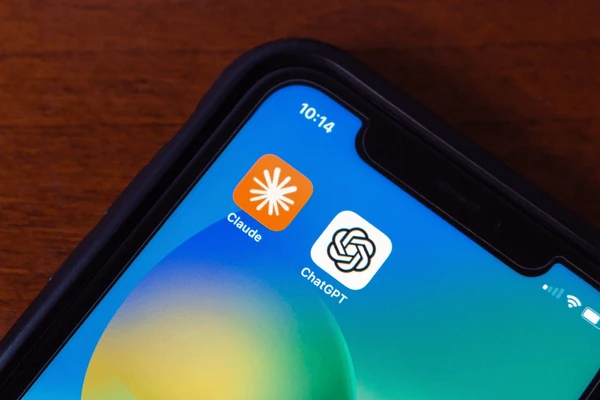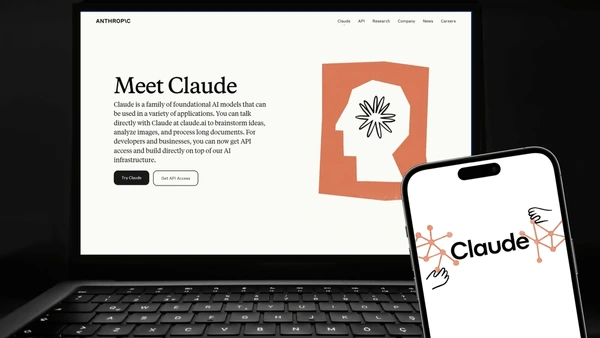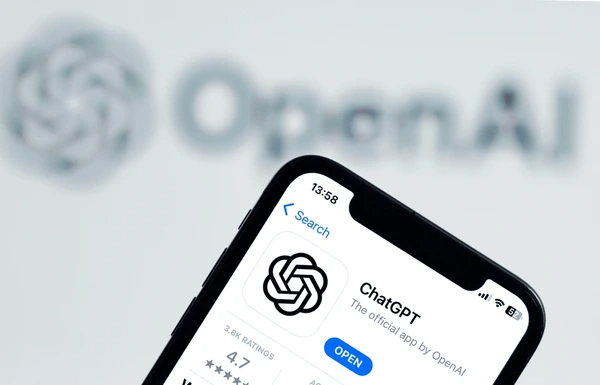
The AI landscape in 2025 is marked by two powerful models: Claude vs. ChatGPT. These AI tools, developed by Anthropic and OpenAI, are transforming how industries leverage artificial intelligence. Each of these models offers unique strengths and caters to different needs, making it crucial to understand their distinctions. This article explores their key differences, performance, use cases, pricing, and more to help you decide which model is right for you.

What are Claude and ChatGPT?
To begin, let’s break down what Claude and ChatGPT are all about.
Claude
Claude, created by Anthropic, emphasizes safety, ethical considerations, and model alignment. This AI tool, named after the pioneering mathematician Claude Shannon, aims to deliver high-quality responses while minimizing risks associated with AI deployment. Claude’s design centers on precision and safety, making it ideal for sensitive applications.
ChatGPT
Developed by OpenAI, ChatGPT is based on the GPT-4 architecture. This model is renowned for its versatility and its ability to generate text across a wide range of tasks, from creative writing to data analysis and programming. ChatGPT’s large-scale design allows it to excel in a broad spectrum of domains, offering users an impressive and dynamic AI experience.

Claude vs ChatGPT: Key Differences
Architecture and Design
Claude’s core design focuses on minimizing risk and optimizing safety. Built with approximately 130 billion parameters, it ensures reliable and ethical responses. In contrast, ChatGPT leverages the GPT-4 architecture, boasting over 1.8 trillion parameters. This larger size allows it to handle more data but demands significantly more computational resources.
While Claude’s compact design emphasizes safety and alignment, ChatGPT’s expansive architecture excels in handling diverse tasks, making it more versatile.
Performance and Capabilities
Claude and ChatGPT each shine in different areas.
- Claude delivers superior performance in technical reasoning and mathematical tasks. It boasts high accuracy when solving complex coding challenges and mathematical problems.
- ChatGPT, on the other hand, excels in creative tasks like storytelling, marketing, and multimodal content generation (text and images). ChatGPT also performs well in debugging and providing detailed explanations for various coding issues.
| Metric | Claude | ChatGPT |
|---|---|---|
| Accuracy in Coding | High, particularly for complex tasks | Moderate to High, better for simpler tasks |
| Text Generation | Focused and precise, good for factual content | Highly creative, suitable for dynamic writing |
| Mathematical Reasoning | Excellent performance | Less accurate compared to Claude |
| Multimodal Support | Text-only | Text and image input supported |
Ethical and Safety Features

Claude places great importance on ethical alignment and content moderation. With safety features integrated throughout its design, it strives to ensure that outputs adhere to ethical standards. This makes it particularly suitable for industries where content moderation is essential, such as healthcare or legal services.
ChatGPT, while also implementing moderation, has faced criticism for occasional biases and output issues. OpenAI is continually working to improve these features, but Claude’s focus on safety gives it an edge in ethically-sensitive fields.
Use Cases: Where Do Claude and ChatGPT Excel?
Claude’s Best Use Cases
Claude is particularly effective for applications where precision and safety are paramount. Some ideal use cases include:
- Customer Support: Claude’s ethical design ensures that it provides accurate, unbiased assistance in industries like finance and healthcare.
- Legal Tech: Its focus on reliability and alignment makes Claude ideal for tasks like contract analysis and legal research.
- Healthcare: Claude’s ability to minimize harm and provide factual, clear answers makes it an excellent choice for patient interactions and medical queries.
ChatGPT’s Best Use Cases
ChatGPT shines in creative and versatile applications:
- Content Creation: Whether you need social media posts, marketing copy, or creative writing, ChatGPT excels in generating engaging, creative content quickly.
- Programming: ChatGPT is highly regarded for its ability to provide coding suggestions, debugging support, and explanations for complex coding problems, making it a great tool for developers.
- Education: ChatGPT’s conversational nature and ability to explain concepts in simple terms make it a strong resource for tutoring and learning.
Cost and Accessibility
Both Claude and ChatGPT offer accessible options for users, though they differ in terms of pricing models.
| Model | Free Tier | Paid Tier |
|---|---|---|
| Claude | Unlimited access for basic features | Affordable pricing at $0.15 per million tokens |
| ChatGPT | Free access to GPT-3.5 | Premium access to GPT-4 ranges from $10 to $30 per month |
Claude offers a free tier for unlimited access on certain platforms, with low-cost API access for advanced features. It is especially popular with developers looking for cost-efficient AI solutions. On the other hand, ChatGPT’s free tier gives access to GPT-3.5, while users need to pay for GPT-4 Turbo access, typically ranging from $10 to $30 per month.
Claude vs ChatGPT: Real-World Applications
Claude in the Real World
Claude has made a significant impact in industries requiring ethical AI practices:
- Mental Health Services: Claude is used by organizations to create AI-driven mental health chatbots, ensuring safe, non-harmful interactions with users.
- Customer Service: Companies like Apple and Amazon use Claude to power their customer support systems, ensuring both accuracy and safety in responses.
ChatGPT in the Real World
ChatGPT is well-integrated into business processes and creative workflows:
- Marketing Automation: Startups and small businesses leverage ChatGPT for content generation, such as advertisements and email campaigns, increasing productivity while maintaining creativity.
- Education: Educators use ChatGPT for creating interactive lessons, homework assignments, and research summaries, helping students better understand complex topics.
Future of Claude and ChatGPT: What’s Next?
Claude’s Future
Claude’s future lies in further specialization and ethics-focused development. As AI regulations increase, Claude is expected to lead the way in safe AI deployment in regulated sectors like healthcare and law. Its open-source nature also promises to encourage broader collaboration in improving the model’s safety features.
ChatGPT’s Future
For ChatGPT, the next steps likely include better multimodal capabilities and broader integration with OpenAI’s other tools, like DALL·E for image generation and Whisper for speech recognition. Its versatility is set to expand, making it even more powerful in both creative and enterprise environments.
Conclusion: Which AI Should You Choose—Claude or ChatGPT?
The choice between Claude vs ChatGPT ultimately depends on your specific needs:
- Claude is the better choice for those who prioritize ethical AI, safety, and precision, especially in technical fields such as legal services, healthcare, and customer support.
- ChatGPT stands out for creativity, versatility, and dynamic capabilities. It’s ideal for tasks like content creation, education, and business automation.
Both AI models are powerful tools, but they cater to different types of use cases. Understanding your needs will help you select the right model for your work.of AI interactions you require.
To get detailed scientific explanations of Claude vs. ChatGPT, try Patsnap Eureka.

